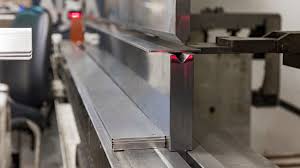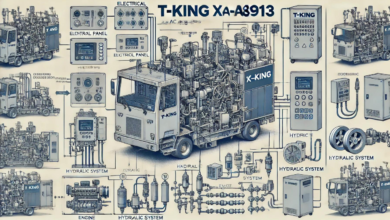Joggle vs. Flange: Which is Better for Your Sheet Metal Fabrication Project?

In sheet metal fabrication, it’s important to achieve precise and durable results. This ensures your project’s success. Two common techniques used in this field are joggles and flanges. Both serve unique roles. They each have specific benefits based on your project’s needs. Not sure about your sheet metal options? This article will explain the differences. It will help you choose what best fits your fabrication needs.
Before we compare them, let’s define a joggle and a flange. We’ll also examine how manufacturers use each in sheet metal fabrication.
What is a joggle in sheet metal?
A joggle is a bent section in sheet metal. It creates a step or offset along the metal’s edge. A joggle helps adjust for differences in material thickness. It also fits pieces together for a tight, clean joint. Joggles are often used when one piece of sheet metal overlaps or aligns with another. This is especially important when the pieces have different thicknesses.
When you juggle a metal piece, it bends at the edge. This creates a step that helps the two metal sheets lock together better. This technique is key for custom enclosures, doors, panels, and other items that need a precise fit. It also helps provide more support for the metal parts once we join them.
To Learn More about joggles in sheet metal fabrication, check out this helpful article.
What is a flange in sheet metal?
In sheet metal fabrication, a flange forms when a raised edge bends or folds at a 90-degree angle. Flanges help strengthen the edges of sheet metal. They offer structural stability and improve joining. They help attach the metal sheet to another surface. This is often done with bolts, screws, or rivets.
Flanges are crucial for many uses. They help attach sheet metal to other materials or components. They add surface area to secure joints. You can use them in many industries, like HVAC, automotive, and aerospace.
Joggle vs. Flange: Key Differences
Let’s look at joggles and flanges. We’ll compare their uses, benefits, and drawbacks.
1. Purpose and Functionality:
- Joggle: A joggle’s main job is to create a step in sheet metal. This helps two pieces fit together well, even if they are different thicknesses. Craftsmen use joggles when they need precision in alignment and tight joints. They’re great for situations that must a precise fit of metal parts. This includes custom enclosures and panels.
- A flange reinforces and strengthens the edges of the metal. It’s perfect for jobs that need a secure attachment or mounting of sheet metal to a surface. Flanges are often used in industries needing strong and secure connections. This includes HVAC duct construction and making automotive parts.
2. Ease of Fabrication:
- Joggle: Making a joggle requires careful bending. This can be tough based on how thick the material is. Creating a uniform and accurate step is delicate. It needs specialized equipment.
- Fabricating a flange requires less effort than creating a joggle. A flange usually means bending sheet metal at a right angle. This process is simpler and requires less precision than making a joggle.
3. Durability and Strength:
- Joggle: Joggles create tight fits, but they don’t make the sheet metal much stronger. Using good welding or fastening methods can improve the assembly’s durability.
- Flange: Flanges provide better structural strength. Their larger surface area helps distribute stress and weight in an even manner. A flange enhances the durability of the joint, making it less likely to warp or fail under pressure.
4. Cost and Time Efficiency:
- Joggle: Creating a joggle is complex, so it can lead to higher labor and production costs. Also, the tools for accurate bending might slow down the turnaround time.
- Flange: Flanges are easier to make, so they usually cost less and take less time to produce. They are a great choice for high-volume manufacturing. Here, time and cost matter a lot.
Which should you choose for your project?
The decision to use a joggle or a flange ultimately depends on the specific details of your project. Here are some key considerations:
Joggle:Select a joggle when your project needs precise alignment of two metal sheets. This is important if the sheets have different thicknesses or if you need a tight fit for looks or function.
Flange:Select a flange for better support, more attachment space, or quicker, cheaper fabrication.
You can often use joggles and flanges together. This combination results in a strong, durable, and well-assembled sheet metal product. Using both techniques together can help you meet your design needs and project goals.
To learn how joggles can help in sheet metal fabrication, visit https://miharmle-cnc.com/ We focus on high-quality CNC machining and sheet metal work.
Conclusion
Knowing the differences between joggles and flanges is important. This is for you if you make custom machine parts, build sturdy sheet metal boxes, or design complex products. Choosing the right technique helps your project meet structural and aesthetic needs.
T BAILEY, INC. recognizes that selecting the appropriate method plays a vital role in achieving precise and efficient fabrication. Both techniques have unique benefits. Choose based on your project’s needs. Knowing how each method impacts design and fabrication helps you get great results. This way, your project will be functional, cost-effective, and efficient.




